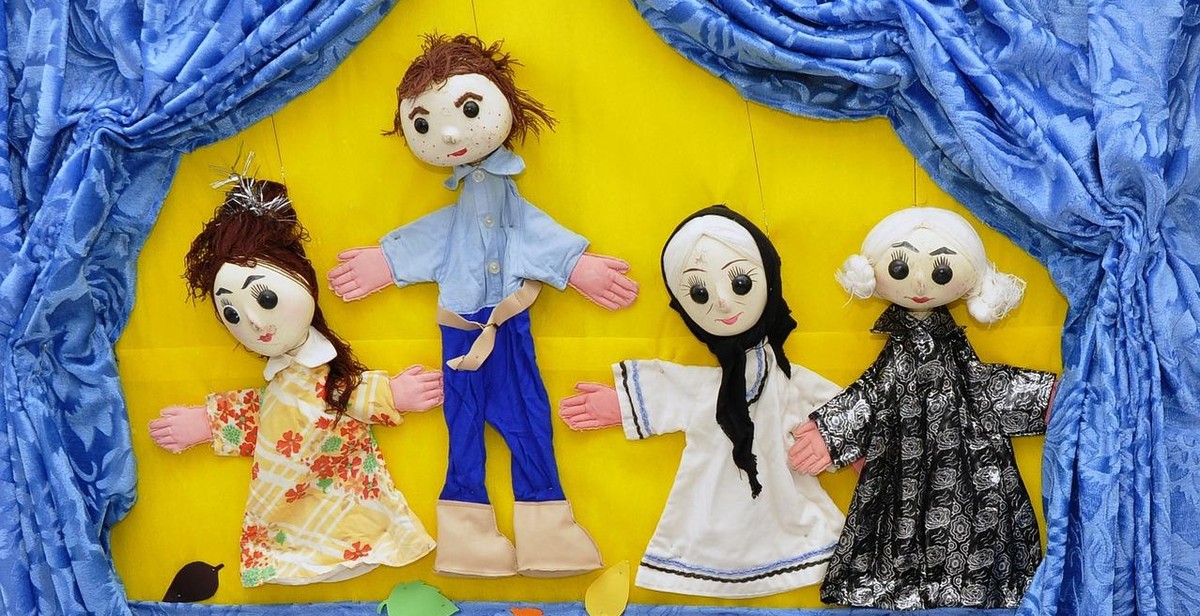How to Make Marionette Puppets Come Alive: Secrets to Infusing Personality and Movement into Puppet Characters
Marionette puppets have been captivating audiences for centuries with their unique ability to bring characters to life. However, making a marionette puppet come alive is not as easy as it seems. It requires a deep understanding of the puppet’s personality and movement, and the ability to infuse these elements into the puppet’s performance.
As a professional puppeteer with over 10 years of experience in the industry, I have learned the secrets to making marionette puppets come alive. In this article, I will share my tips and techniques for infusing personality and movement into puppet characters, from the basics of puppet manipulation to more advanced techniques for creating dynamic performances.
The Basics of Marionette Puppetry
Before diving into the secrets of infusing personality and movement into marionette puppets, it’s important to understand the basics of puppet manipulation. Marionette puppets are typically controlled by strings attached to various parts of the puppet’s body, and the puppeteer manipulates these strings to create movement and expression.
- Understanding the different types of strings and their functions
- Learning basic marionette puppetry techniques, such as walking and gesturing
- Developing a sense of rhythm and timing in puppet manipulation
Infusing Personality into Marionette Puppets
Personality is a key element in making a marionette puppet come alive. Without a distinct personality, a puppet can appear lifeless and unengaging. To infuse personality into a marionette puppet, a puppeteer must:
- Develop a backstory for the character
- Create unique physical characteristics and mannerisms
- Use vocal inflections and intonations to convey emotion and tone
Creating Dynamic Performances
The final secret to making marionette puppets come alive is creating dynamic performances. A dynamic performance is one that engages the audience and captures their attention from beginning to end. To create a dynamic performance, a puppeteer must:
- Plan out the performance, including blocking and choreography
- Use music and sound effects to enhance the performance
- Engage with the audience and create a sense of connection
By following these tips and techniques, any puppeteer can bring their marionette puppets to life and create captivating performances that will leave audiences spellbound.
Understanding Marionette Puppets
Marionette puppets are unique and complex puppetry forms that involve string manipulation to create movement and bring characters to life. These puppets have been in existence for centuries and have evolved over time to become the intricate and sophisticated puppetry forms we know today.
What are Marionette Puppets?
Marionette puppets are puppets that are manipulated using strings or wires. They are usually made of wood, cloth, or other materials and are designed to resemble human or animal characters. The puppeteer controls the movements of the puppet by pulling on the strings or wires attached to different parts of the puppet’s body.
Marionette puppets are different from other puppetry forms like hand puppets or rod puppets because they require a lot of skill and practice to manipulate. The puppeteer must be able to control the strings and wires with precision to create realistic movement and expressions.
History and Evolution of Marionette Puppets
The history of marionette puppets can be traced back to ancient civilizations like Greece and Egypt. However, the modern marionette puppetry form originated in the 16th century in Italy. Italian puppeteers created intricate marionette puppets that were used in performances for royalty and nobility.
Over time, marionette puppetry spread across Europe and became popular in countries like France, Germany, and England. Each country developed its unique style of marionette puppetry, which incorporated local culture and traditions.
Today, marionette puppetry is still popular in many parts of the world, and modern puppeteers continue to innovate and experiment with new techniques and styles. Some puppeteers even use technology like animatronics to create more realistic movement and expressions in their puppets.
| Advantages | Disadvantages |
|---|---|
|
|
In conclusion, marionette puppets are a unique and fascinating puppetry form that requires a lot of skill and practice to manipulate. Despite their challenges, marionette puppets continue to be popular among puppeteers and audiences around the world.
Creating Your Own Marionette Puppet
Creating your own marionette puppet is a fun and rewarding process that can result in a unique and personalized character. Here are some steps to consider when making your own marionette puppet:
Choosing the Right Materials
Choosing the right materials is crucial to the success of your marionette puppet. Here are some materials to consider:
- Wood: Wood is a common material used for the puppet’s body and limbs. It is durable and can be easily carved or sanded to achieve the desired shape.
- Wire: Wire is used to create the puppet’s joints and to connect the various parts of the body. It should be strong enough to support the weight of the puppet.
- Fabric: Fabric is used to create the puppet’s clothing and accessories. It should be lightweight and easy to maneuver.
- Paint: Paint is used to add color and detail to the puppet’s body and clothing. Acrylic paint works well on wood and fabric.
Designing the Puppet’s Look
The puppet’s look is an important aspect of its personality. Here are some tips for designing the puppet’s look:
- Sketch: Start by sketching out the puppet’s design. Consider the character’s personality and the type of performance it will be used in.
- Details: Add details to the sketch, such as facial features, clothing, and accessories. Think about how these details will affect the puppet’s movement.
- Test: Test the design by creating a small model of the puppet. This will help you refine the design and make any necessary adjustments.
Constructing the Puppet’s Body and Limbs
Constructing the puppet’s body and limbs requires patience and attention to detail. Here are some steps to consider:
- Cut: Cut the wood into the desired shapes for the body and limbs. Use a saw or a carving knife to achieve the desired shape.
- Sand: Sand the wood to smooth out any rough edges or surfaces.
- Drill: Drill holes in the wood where the wire will be inserted to create the joints.
- Connect: Connect the various parts of the body and limbs with wire. Make sure the wire is strong enough to support the weight of the puppet.
- Add fabric: Add fabric to the body and limbs to create the puppet’s clothing and accessories. Use a needle and thread to attach the fabric to the wood.
- Paint: Paint the puppet’s body and clothing with acrylic paint. Add any necessary details or designs.
Creating your own marionette puppet is a rewarding experience that can result in a unique and personalized character. By choosing the right materials, designing the puppet’s look, and constructing the puppet’s body and limbs, you can bring your marionette puppet to life.

Bringing Your Marionette Puppet to Life
Marionette puppetry is an art form that requires a lot of practice and patience. To truly bring your marionette puppet to life, you need to focus on developing its personality, adding movement and gesture, and mastering the art of puppetry performance.
Developing the Puppet’s Personality
The first step to bringing your marionette puppet to life is to develop its personality. This involves creating a backstory for your puppet and understanding its motivations and characteristics.
Think about your puppet’s gender, age, and occupation. What does it like to do? What are its strengths and weaknesses? By answering these questions, you can start to develop a unique personality for your puppet that will make it stand out on stage.
Adding Movement and Gesture
Once you have developed your puppet’s personality, it’s time to focus on adding movement and gesture. This is where the magic of marionette puppetry comes to life.
Start by practicing basic movements, such as walking, waving, and nodding. Once you have mastered these movements, you can start to add more complex gestures and movements that will bring your puppet to life.
Remember to pay attention to the details, such as the movement of the eyes and mouth. These small details can make a big difference in the overall performance of your marionette puppet.
Mastering the Art of Puppetry Performance
Finally, to truly bring your marionette puppet to life, you need to master the art of puppetry performance. This involves understanding the timing and rhythm of your puppet’s movements and gestures.
Practice your puppetry performance in front of a mirror or with a friend to get feedback on your timing and movements. Remember to stay in character and to keep the puppet’s personality consistent throughout the performance.
With practice and patience, you can bring your marionette puppet to life and create a memorable performance that will captivate your audience.

Conclusion
In conclusion, creating marionette puppets that come alive with personality and movement is an art form that requires patience, practice, and creativity. By following the tips and techniques outlined in this article, you can take your marionette puppetry skills to the next level and captivate audiences with your unique and dynamic characters.
Remember the Basics
It’s important to remember the basics of marionette puppetry, such as keeping the strings taut, using proper hand movements, and breathing life into your character. These foundational skills will help you build a strong framework for infusing personality and movement into your puppets.
Experiment with Movement
Don’t be afraid to experiment with movement and explore the full range of motion available to your marionette puppet. Try new poses, gestures, and expressions to bring your character to life and make them stand out on stage.
Find Inspiration Everywhere
Finally, remember that inspiration can come from anywhere. Whether it’s observing the movements of animals or studying the mannerisms of your favorite actors, there are endless sources of inspiration that can help you create unique and memorable marionette puppets.
| Tip | Description |
|---|---|
| Practice | Practice your marionette puppetry skills on a regular basis to improve your technique and build confidence. |
| Stay Creative | Don’t be afraid to think outside the box and try new things to infuse personality and movement into your puppets. |
| Have Fun! | Remember to enjoy the process of creating and performing with your marionette puppets. Let your passion and enthusiasm shine through in your work. |
With these tips and techniques, you can take your marionette puppetry skills to new heights and create characters that truly come alive on stage. So grab your puppets, get practicing, and let your creativity soar!
